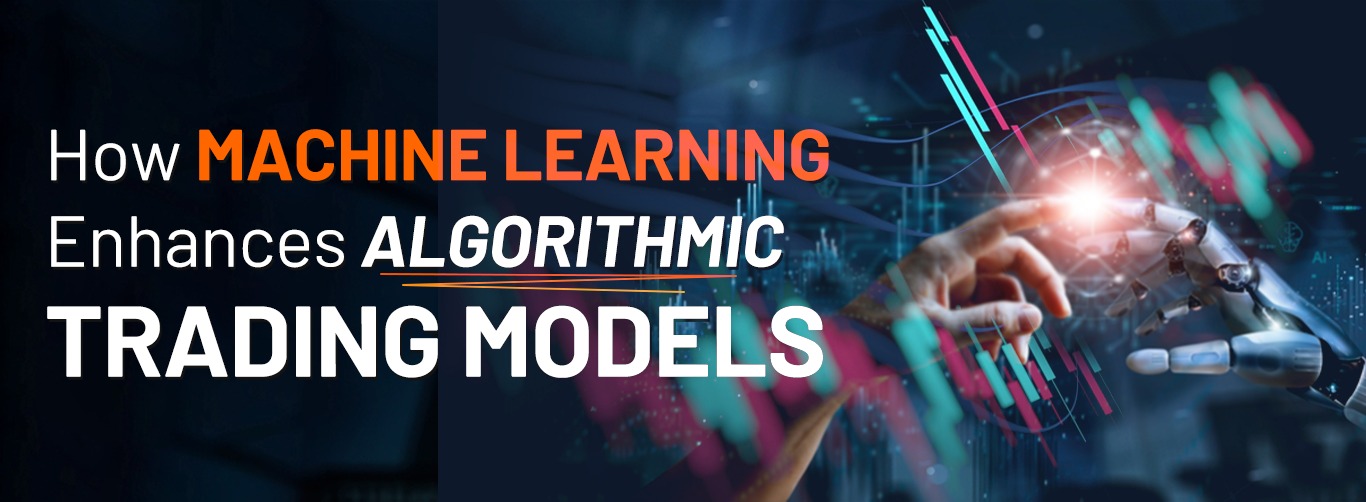Incorporating machine learning into securities trading has transformed how trading is executed, driving significant growth in the sector. As of recent reports, the global algo trading market is valued at approximately USD 14.42 billion, and it’s projected to reach USD 23.74 billion by 2029.
Machine learning leverages vast amounts of data to assist traders in making optimal, real-time decisions. It’s a powerful tool for automating processes, identifying patterns, and executing complex trading strategies.
This article explores how machine learning enhances algo trading models and improves trading performance.
Seven Ways Machine Learning Enhances Algorithmic Trading Models
1. Detect Anomalies in the Security Market
Machine learning algorithms continuously monitor markets for anomalies. The financial markets can experience sudden volatility due to price swings, market manipulation, or unexpected news. If these disruptions aren’t detected promptly, they can significantly affect trading strategies. Machine learning models help detect anomalies early, allowing trading strategies to be updated automatically, minimizing potential losses.
2. Optimize Real-Time Trading
Named Entity Recognition (NER) helps companies analyze market data by extracting key entities, such as people or locations, to build relationship networks. For example, models like GloVe and BERT are used to improve trading algorithms by understanding the context of news or events that influence the market. Event detection tools also help capture and analyze critical news events, assessing their real-time impact on stock prices.
Additionally, machine learning can enhance real-time trading with tools like chatbots, which can provide live stock price movements, real-time quotes, and alerts. This allows traders to supplement their judgment with accurate, up-to-date information on market behavior.
3. Analyze Investor Sentiments
Investor sentiment significantly impacts stock market movements. Companies are increasingly using machine learning to analyze investor sentiment and predict stock price changes. Natural Language Processing (NLP) tools analyze social media posts, news articles, and financial reports to gauge market sentiment. This analysis helps identify trends, which are then categorized as positive, negative, or neutral. For instance, positive sentiment may suggest rising stock prices, prompting traders to act accordingly.
4. Predict Trades with Advanced Techniques
Convolutional Neural Networks (CNNs) are used to recognize patterns in time-series financial data, helping traders identify stock price trends. By training these models on historical data, they can simulate realistic trading scenarios, improving their predictive accuracy.
Transformer models are also useful for forecasting financial data over different time horizons. These models help traders identify patterns and make precise predictions, enhancing the decision-making process in the dynamic stock market.
5. Manage Trading Risk
Machine learning models analyze historical data alongside current market conditions to forecast potential trading risks. For instance, during a market downturn, these models can estimate possible losses, enabling traders to implement hedging strategies and avoid significant losses. Additionally, algorithmic trading systems can recommend diversified trading techniques, helping traders steer clear of underperforming assets.
6. Execute High-Frequency Trading
High-frequency trading involves executing large orders within fractions of a second—an impossible task for human traders. Machine learning plays a crucial role here by automating tasks and quickly executing trades based on complex algorithms. Techniques like Support Vector Machines (SVMs) help separate and classify data to identify whether the market is trending upwards or downwards, allowing traders to act instantly based on new data patterns.
7. Minimize Human Bias in Trading
Human traders are often influenced by emotions, leading to suboptimal decisions. Machine learning eliminates this bias by relying solely on data and logical analysis. For example, during periods of market volatility, a trader might panic and make impulsive decisions, whereas an algorithmic trading system would base decisions on data, avoiding emotional pitfalls.
Conclusion
As algo trading continues to evolve, those who embrace machine learning will stand out in the competitive landscape. Machine learning is shaping the future of trading by enabling traders to make smarter, data-driven decisions in real time.

Leave a Reply